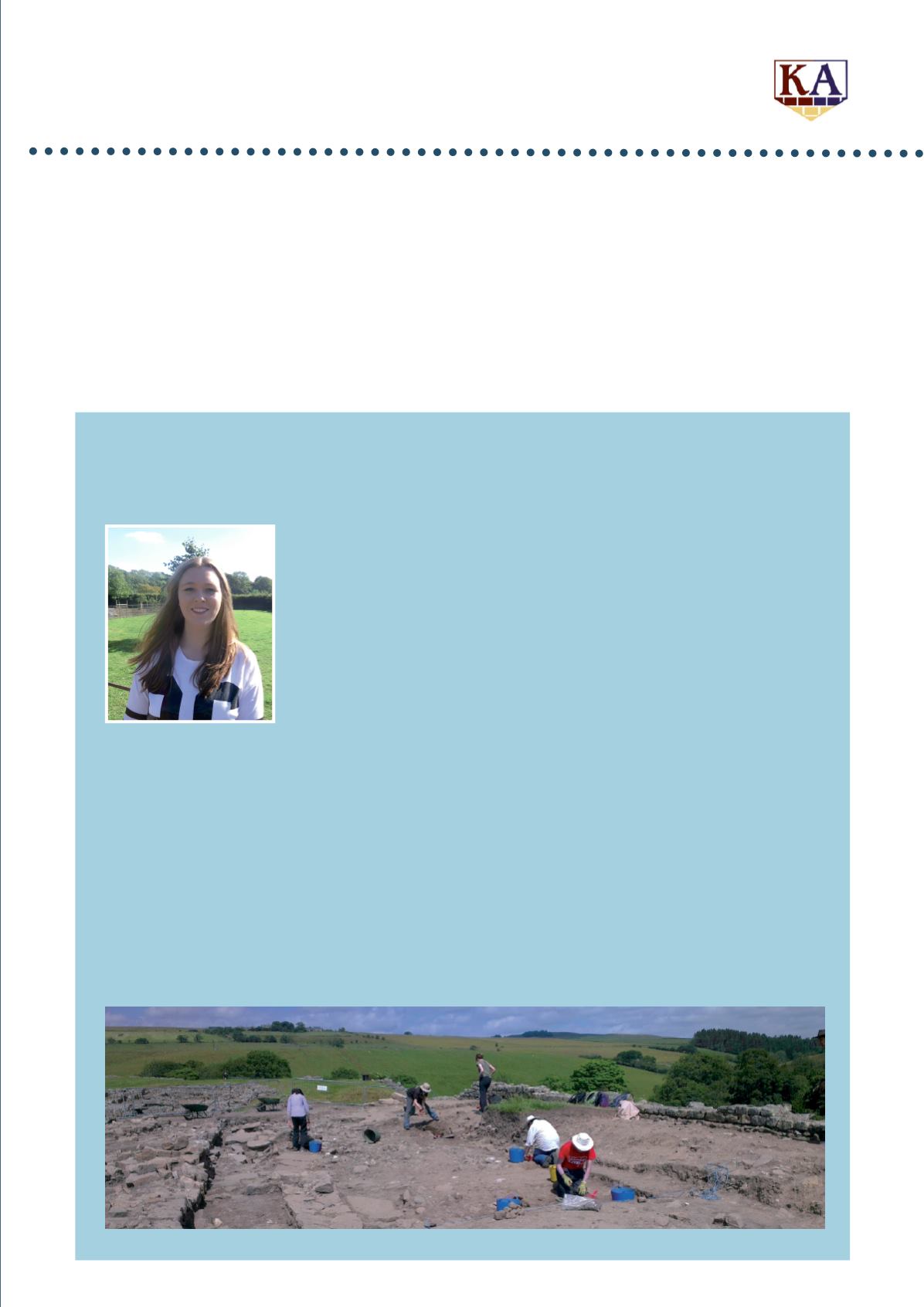
29
Thanks to the contribution
of the KA, I was able to
spend two weeks this July
attending the archaeological
excavations at the Roman
fort site of Vindolanda on
Hadrian’s Wall. This year,
excavations were begun in
the south west corner of the
fort, which had previously not
been investigated. This year
also saw the start of a new
research project entitled: ‘frontiers in transition’ which aims to
examine in more detail the different phases of occupation on the
site as well as the site’s relation to the frontier itself.
I spent the first week on site revealing the surface of the fourth
century intervallum road that ran through the south west
quadrant of the fort. I then started working on establishing the
presence of a revetment wall at the base of the rampart itself as
well as revealing some of an earlier third century road beneath
it. Whilst working in this area, I found a small iron ring which
was thought to have been part of a longer chain of rings that
may have been a decorative feature on a cavalryman’s horse.
This added further to the idea that the inhabitants of the third
century fort included a unit of part mounted cavalry.
During the second week I was moved to a new section of the
fort to work on a barrack room dating to the third century fort.
Whilst working here, I found a number of interesting items which
revealed the presence of a garrison, including: arrow heads, the
head of a hammer, a knife blade and a whole pot which had been
smashed in situ.
Excavating at Vindolanda was particularly helpful for me as I have
chosen to write my dissertation on the site. I aim to examine the
army’s relationship with the religion and its impact on Roman
Britain, using Vindolanda as a case study. The site is particularly
useful in this regard as it displays evidence of traditional Roman
gods but also native British gods, eastern deities and potentially
some evidence of Christianity. Also, as the site is one of the
most excavated along Hadrian’s Wall, there is a huge amount of
information available. By attending the excavations, I was given
the opportunity to see these features in their original context
and how they relate to other parts of the fort, as well as to gain
information and article references from the site directors and
other excavators about previous discoveries at the site relating
to religion.
Thanks to the KA, I now have a better understanding of the
site and have aquired more archaeological skills such as the
recognition of small finds which I previously would not have
been able to identify. Lastly, I have gained a more in-depth
understanding of the site, its history and its overall context.
The Keble Association
his year KA grants made it possible for Keble students
to attend and present research at academic conferences
around the world, visit archives and undertake summer
study and international medical elective programmes. On the
humanitarian side, KA grants helped Keble students make
a difference around the world through teaching, working in
orphanages, nature conservation and community work.
The College’s burgeoning arts scene also benefited, with grants
supporting Arts Week, participation in the Edinburgh Fringe,
a College Choir trip to Poland, ballroom dancing, film-making,
music and magazines.
This year marked the second anniversary of the pilot scheme
for internship grants, which this year allowed students to gain
experience in marketing, finance, law, public relations and
publishing, as well as in museums and galleries. Internships help
Keble students compete in the job market and the KA’s grants help
make it financially possible for students to undertake these where
they are not, or are not fully, remunerated.
For more information, visit our website:
Project Report by Jennifer McCormick,
Third Year Classical Archaeology & Ancient History Student
Excavation at the Roman Site of Vindolanda
t
Angela Fox (1993)


